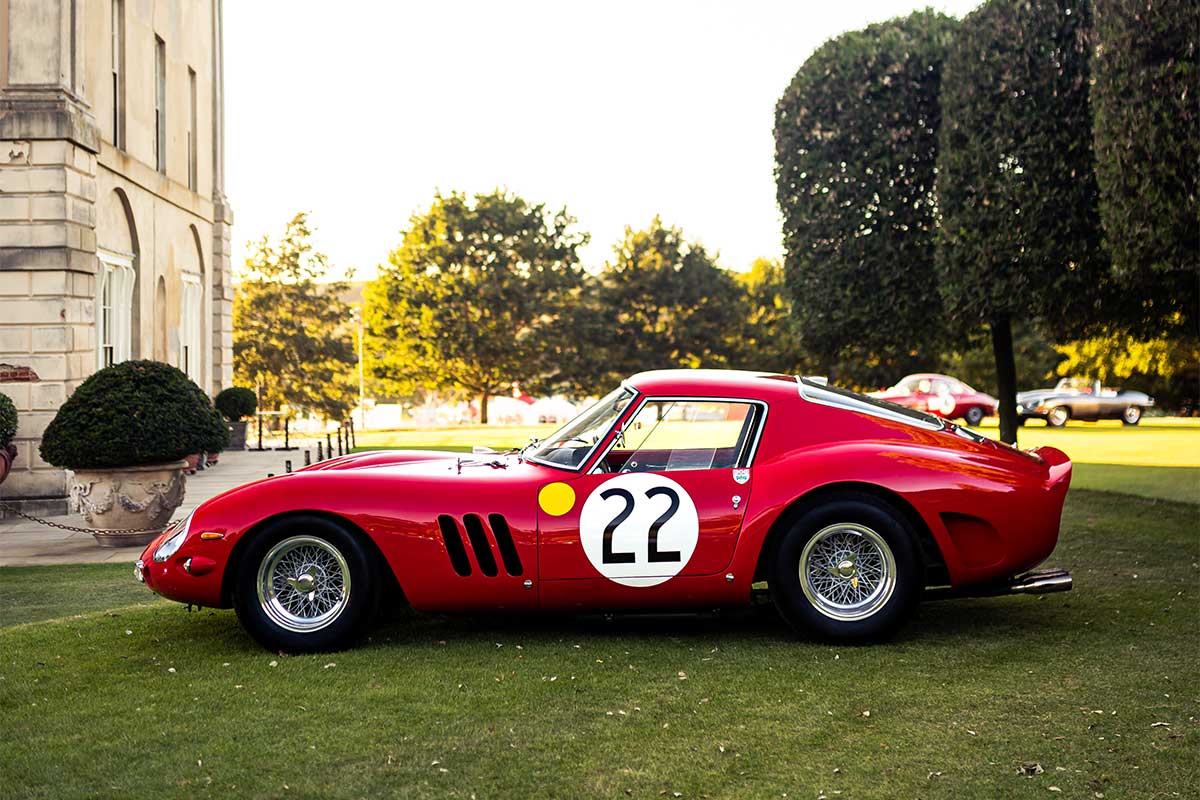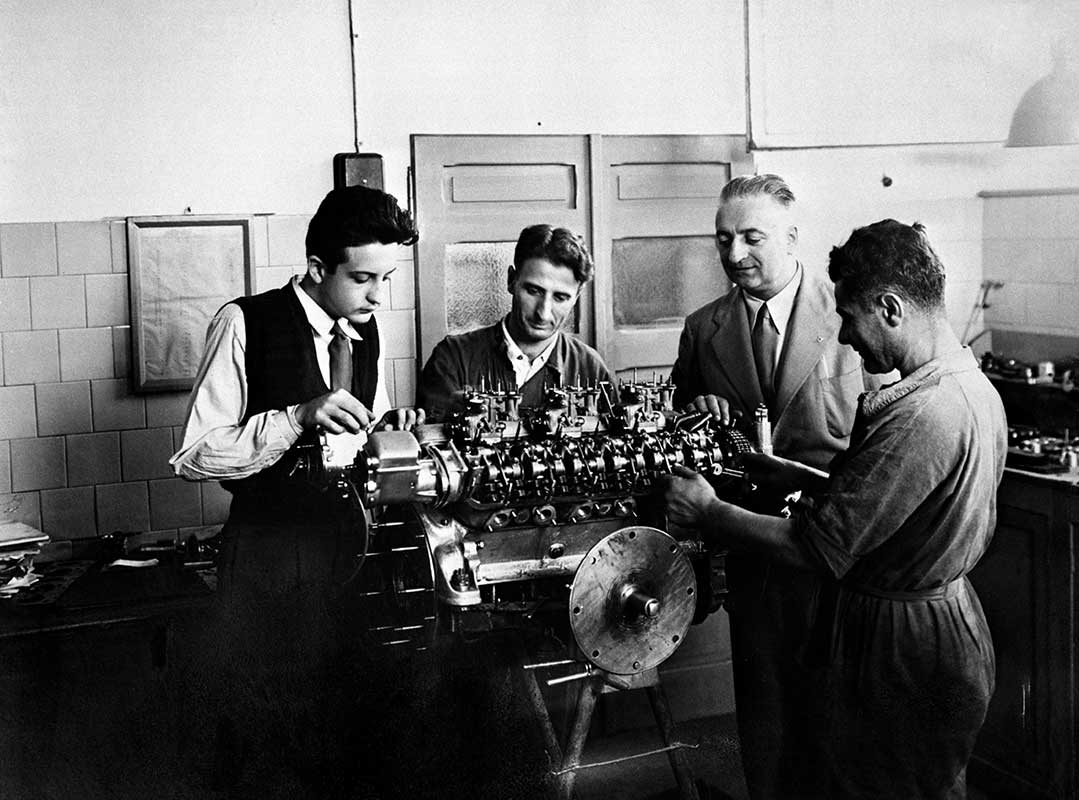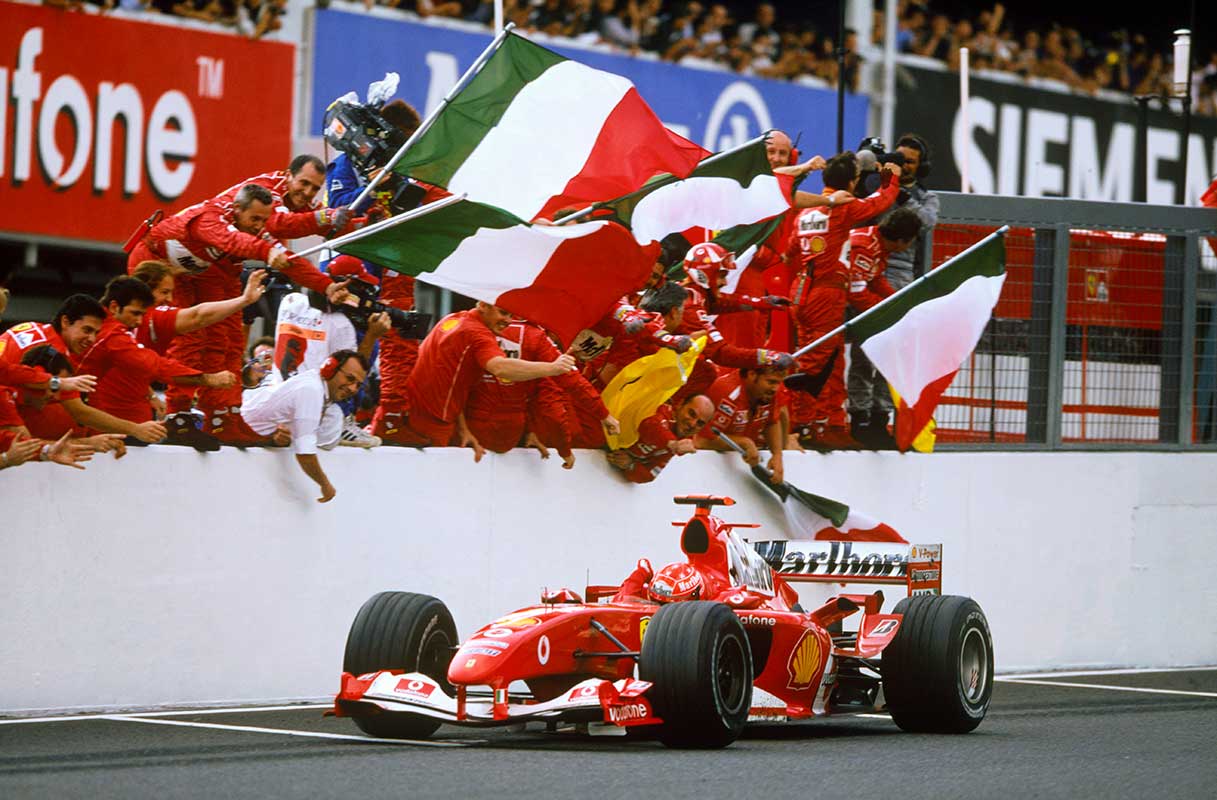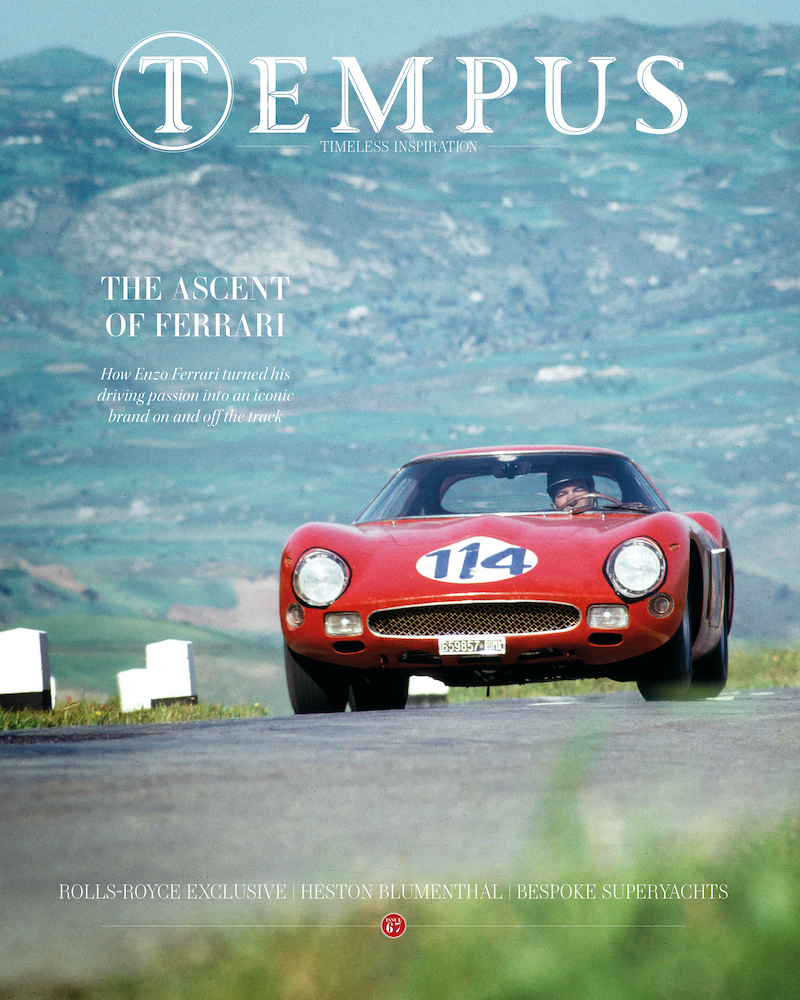This website uses cookies so that we can provide you with the best user experience possible. Cookie information is stored in your browser and performs functions such as recognising you when you return to our website and helping our team to understand which sections of the website you find most interesting and useful.
The rise of Ferrari: Tempus takes a look behind the legend
By Rory FH Smith | 7 April 2020 | Cars & Yachts
This Italian marque has dominated the automotive world both on and off the track since 1947

Download your complimentary copy of Tempus Magazine issue 67 now
When the hammer fell on lot #247 at the prestigious Monterey Classic Car Auction in California on Saturday 25 August 2018, motoring history was made. Few car collectors would have believed it was possible, but a highly prized 1962 Ferrari 250 GTO, designed by coachbuilder Carrozzeria Scaglietti, had just officially become the most expensive car ever sold at auction.
Fetching a total of $48,405,000 (£41,462,270), the gleaming red monument to 1960s design excellence and motorsport prestige rolled off the auction block and into its rarified place in the record books – beating the previous record by a cool $10,290,000. The majesty surrounding the Maranello-based car empire had reached a new peak. The cult of Ferrari was in rude health.
Backtrack to 1947, in the sleepy town of Maranello. With the memory of World War II still fresh in people’s minds, Italy is recovering and repairing the damage done by five long years of death, destruction and conflict. Out of nowhere, a deep red coloured car with smooth, flowing bodywork, bearing a yellow badge adorned with a black prancing horse rolls through the factory gates on Via Abetone Inferiore. Ferrari is born.
From that moment, the Italian marque has built up a legendary status in the motoring world, with the vast majority of its racing cars and road-going products commanding eye-watering figures on the auction block. Only a handful of brands come remotely close to Ferrari’s cultural dominance, with its devoted following leading many a car enthusiast to wonder whether Ferrari’s success is based on a carefully crafted marketing myth or the manufacture of true motoring masterpieces.
Part of the answer can be found 100 years ago, when a young, enthusiastic 22-year-old signed a racing driver’s contract with Alfa Romeo. His name was Enzo Ferrari, and he made his sporting debut for the marque in Sicily’s notoriously challenging Targa Florio road race. Coming first in his category and second overall, Ferrari’s debut had been a resounding success. Despite earning 12,000 lire in prize money, the young driver said: “For me, the key thing was that my inclusion on the Alfa Romeo team became official that day”. From there, more success followed and from April 1924 to May 1928, Ferrari won every race he took part in. Over the next 20 years, he worked his way up the ranks at Alfa Romeo from test driver to driver, commercial partner, and finally director of the Alfa-Corse department. >>
Related: Mercedes leads the Formula 1 effort to fight COVID-19 as new breathing device is approved by NHS

RACING DREAM
Ferrari’s experience with the Alfa-Corse team clearly stood him in good stead for the rest of his career. Just a few years after he’d first established his eponymous company in 1947, the marque celebrated the first of a string of victories that would eventually result in its racing arm, Scuderia Ferrari, becoming the most successful team in Formula 1 history.
In the daredevil world of endurance racing, Ferrari won its first Mille Miglia in 1948 and its first Le Mans 24 Hours in 1949. In Formula 1, it claimed its first World Championship Grand Prix in 1951 and, by 1952, had won the World title with Alberto Ascari, a feat repeated the following year. At the same time, the company formed a relationship with coachbuilder Carrozzeria Scaglietti to form the bodywork of both its racing and production cars.
Located across the road from Ferrari’s garage, the coachbuilding company went on to shape the 1958 250 Testa Rossa, the 250 California Spyder, 250 Tour de France and the legendary 250 GTO, all of which have since become some of the most coveted Ferraris in existence. The result of this heady mix of motorsport success and road car renaissance was a threefold increase in sales between 1950 and 1960. Ferrari looked unstoppable.
But all good things must come to an end and so they did – with abrupt force – on 14 August 1988. At the grand age of 90, Enzo Ferrari died in Maranello, the same place he’d founded his company 41 years before. Just weeks after his death, the Italian Grand Prix went ahead as planned at Monza and, despite the tragic circumstances and perhaps determined to honour their founder’s legacy, the Ferrari team claimed both first and second place. It was the only race McLaren failed to win that season. >>
Related: How Nick Fry took Brawn from near-bankruptcy to a fairytale finish with Jenson Button

THE CAR’S THE STAR
That same year, fellow Italian car giant Fiat increased its 10% in the company to 90%, leaving the remaining shares in the hands of Ferrari’s son, Piero. Despite the shift in control and death of its founder, the 1980s and 90s gave way to some of the most consistently brutal road cars to bear the prancing horse badge. Starting with the 288 GTO in 1984, the iconic F40 followed in 1987 – the last car Enzo Ferrari would see launched. The mid-90s saw the F50 supersede the F40 until the radical Enzo – named in tribute to the late company founder – reset the benchmark for hypercars in 2002.
For the vast majority of Ferrari fans, however, the 2000s were eclipsed by one man – Michael Schumacher. Between 2000 and 2008, the marque won a total of 13 Formula 1 world titles, with Schumacher taking five drivers’ titles in the same period. Like Mercedes’s dominance today, the ‘Rosso Corsa’ shade of red was inescapable on the world motor racing circuit during the first decade of the new millennium. On the back of such success, the marque capitalised commercially, expanding its empire of Ferrari stores selling merchandise and branded products.
Today, Ferrari is a very different beast to the one reared by that young racing driver from Modena. It is remarkable that the rise of a small garage making racing cars in the wake of the Second World War to the most recognised carmaker on the planet can be so firmly attributed to one man: Enzo Ferrari. Widely known as ‘il Commendatore,’ the motoring mogul’s unwavering commitment to racing undoubtedly resulted in its unparalleled motorsport success. “[It] is a great mania to which one must sacrifice everything, without reticence, without hesitation,” he once said of the sport.
Of course, commitment and good results aren’t always enough on their own. Ferrari was also a natural-born salesman, with a penchant for style, like any self-respecting Italian.
“If you like this car, we’ll make it. If you don’t, we won’t,” he would utter to prospective customers, presumably with his trademark sunglasses shielding his eyes. To this point only, perhaps there is some truth in Ferrari being labelled a marketing myth. But take into account the unparalleled motorsport success, the beauty of its long lineage and the frenzy that follows any new product launch, and the Maranello marque is every bit the motoring masterpiece it appears to be.
As far as businesses go, Ferrari is a fairy tale come true in the automotive world. In the words of its charismatic founder: “If you can dream it, you can do it.”
Read more from our automotive special and download your complimentary issue of Tempus now








